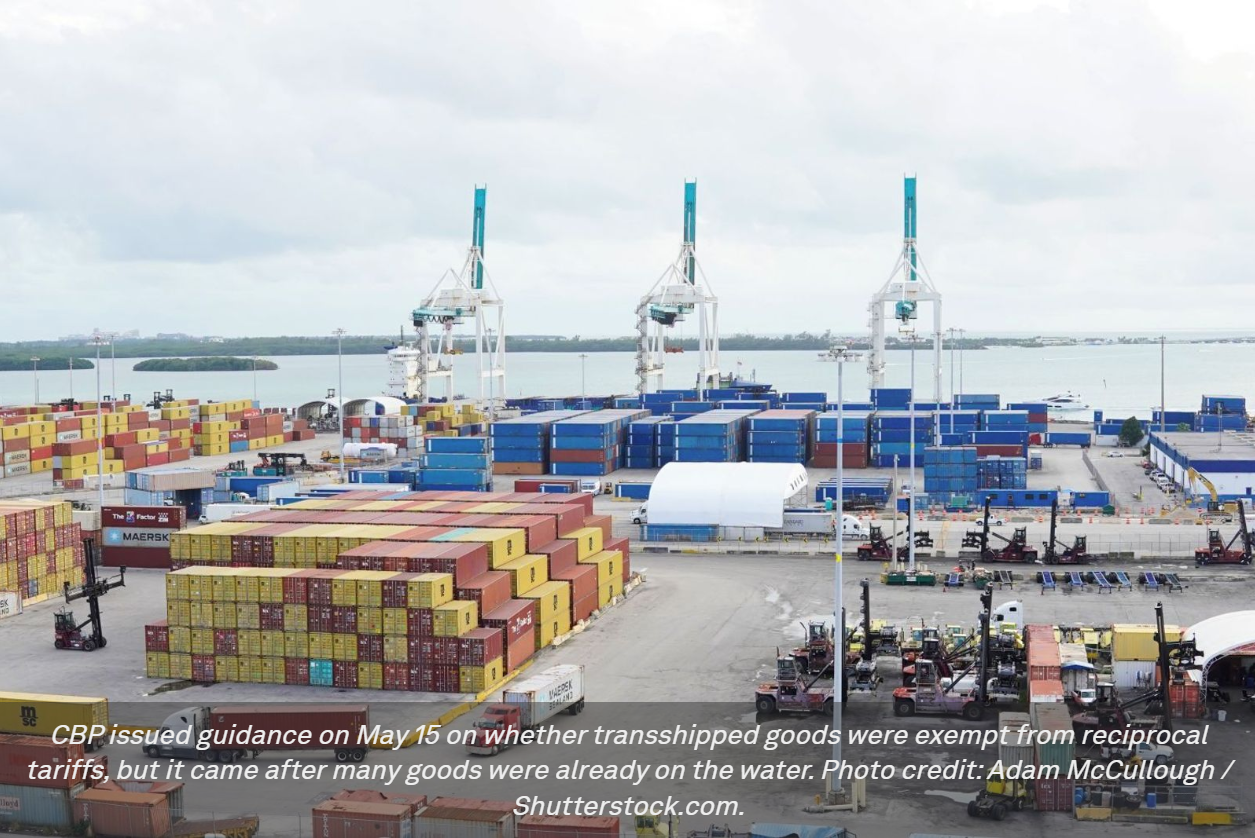
Some US importers with long ocean transit times, including those who move cargo through transshipment hubs, will be on the hook for the 10% US tariffs now in place on non-Chinese goods even if those goods beat an April 5 load-by deadline to avoid the tariffs.
That’s because of a shorter-than-usual length of time set by the Trump administration encompassing the cutoff dates between when goods needed to depart their origin ports and arrive at destination ports.
And that scheduling quirk is causing consternation for importers who believed they had avoided the first salvo of tariffs by loading their cargo before the prescribed date and are now facing unexpected costs.
Don Pisano, president of American Coffee Corp., said shipments from Southeast Asia to US Gulf ports regularly take 60 days, longer than the gap between the“load-by”April 5 deadline set by the White House and the May 27 arrival date set by US Customs and Border Protection (CBP) in which the goods must be“entered for consumption.”
“It seems completely arbitrary and punitive,”Pisano told the Journal of Commerce.
Pisano pointed to another example on a different lane, a containerized shipment of coffee that left Brazil's Port of Santos in late March on a service that went west through the Panama Canal, to Shanghai and then to the US West Coast.
“That's not arriving until May 29, and we'll have to pay $20,000 in tariffs because [the carrier] routed it through Shanghai,”he said.
Further, shippers whose goods were transshipped, with the final leg departing after April 5, will also be subject to the 10% US tariffs, even if the cargo shipped from origin prior to April 5. In many cases, the decision to transship is out of the control of importers.
Delay in 'end-date'guidance
Gabrielle Griffith, a director at BPE Global, a trade compliance consulting firm, said an end date for the in-transit exemption was not initially specified when the reciprocal tariffs were imposed April 2 through President Donald Trump's executive order. The end-date guidance came two days later, on April 4, in a separate message in the Cargo Systems Messaging Service (CSMS), a channel CBP uses to communicate with the trade community.
Griffith said the April 4 message from CBP added the May 27 cutoff in order to, in the agency's words,“prevent abuse of exemption,”and was reiterated by CBP on April 8.
Pisano's contention is that most goods aiming to beat the April 5 deadline were loaded or on the water prior to either of those guidance messages being issued, as importers were racing to beat the deadline.
Griffith said the end-date provision aligns with prior CBP practices for tariff exclusions but differs from earlier executive orders issued under the International Emergency Economic Powers Act (IEPPA) that lacked time limits.
The end date was not specified in Trump's executive order, but CBP has some leeway to interpret the application of that order.
Transshipment confusion
The transshipment issue is potentially more vexing for importers, as CBP's original guidance on April 4 wasn't clear, according to a range of trade compliance experts. At issue is whether reciprocal tariffs would be exempted if goods departed their origin port before April 5, or if transshipped, departed the final leg of their ocean journey prior to April 5.
Guidance issued by CBP on May 15, which included a set of frequently asked questions, included details on how transshipment would impact tariff exemptions.
The guidance painted a scenario in which, prior to the cutoff date for the reciprocal tariff in-transit provision, US-bound cargo is loaded onto a vessel destined for a foreign port prior to shipment to the US. At that foreign port, after April 5, the cargo is transferred onto a different vessel destined for the US.
“The cargo in this scenario does not qualify for the in-transit exception for reciprocal tariffs because the US bound cargo was laden onto a vessel destined for the US after the cutoff date irrespective of when it departed from the original port of lading,”CBP wrote, responding to its own rhetorical question in the guidance.
A trade attorney who did not want to be identified told the Journal of Commerce that the May 15 guidance on transshipment is “inconsistent with previous guidance we received from CBP on the same question, so we are trying to reconcile this.”
The fact that guidance on transshipment came six weeks after the initial executive order will now impact importers for whom it wasn't clear that such a routing wouldn't be exempted, Pisano said.
“It took them six weeks to come up with the wrong conclusion,”he said.

